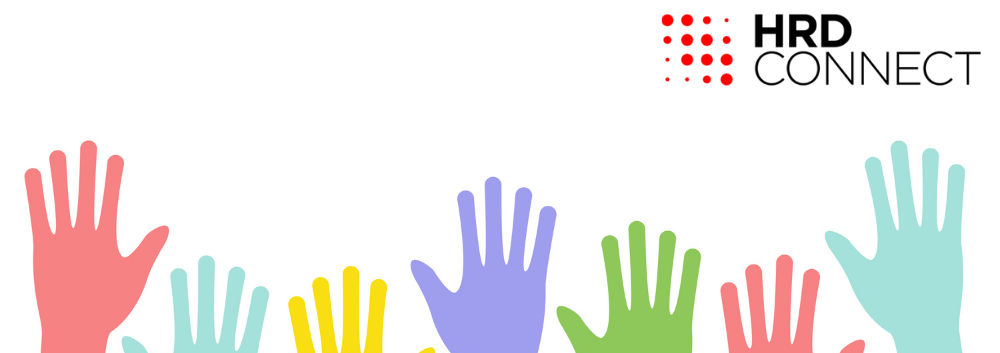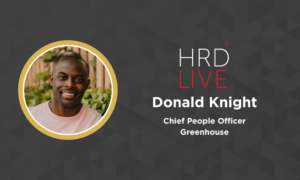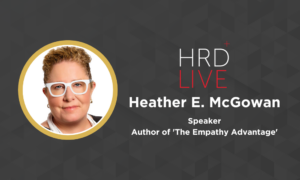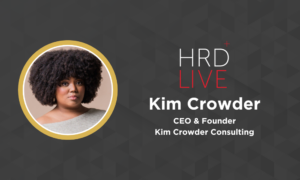DE&I as a key pillar of employer branding strategy
- 6 Min Read
Though diversity and inclusion is still as pertinent as ever, the term itself perhaps isn’t. Now, it’s crucial that organizations also embrace ‘equity’ in their pursuit of true inclusiveness. Gabrielle Botelho, HR director, CGG, explains why DE&I should now be the acronym of choice, and how it ties in with employer branding strategy.
- Author: Gabrielle Botelho
- Date published: Nov 23, 2020
- Categories

30-second summary:
- Embracing equity to create DE&I will be crucial to develop inclusive workplaces
- DE&I includes neurodiversity, aims to eliminate societal barriers, and promotes fairness
- Strong employer branding is vital to attract talent; DE&I plays a big role in achieving this
- Potential benefits include enhanced working conditions and increased employee wellness
Though a noble and worthy endeavor, the time has come where the term ‘D&I’ no longer offers an apt summary of an organization’s responsibility when it comes to the treatment of minority groups. Now, many feel that the ‘E’ (equity) should become a permanent amendment (DE&I). Quite simply, we cannot create an inclusive work environment if we do not practice equity first.
As HR Leaders we should work to ensure that diverse profiles reside in all levels of the organization, including top-level management. At the same time, we should be able to implement affirmative actions to allow individuals of all creeds, colors, and genders to thrive in the workplace. In order to achieve this, DE&I must exist as a comprehensive package, with each component being fulfilled to the max.
Diversity
For some, diversity may encompass certain ‘visible’ characteristics such as ethnicity, disability and age, or what they call ‘invisible’ qualities such as personality, perspectives and interests. However, we should not have a single definition of diversity; each organization should create and own their unique definition.
So, rather than simply viewing a sub-section of the workforce as ‘diverse’, it may be far healthier and more inclusive to adopt the mindset that we are all diverse in our own way. Regardless of characteristics such as race and gender, the fact is that we have all experienced different things and come from different upbringings.
Nevertheless, even though we are all diverse, we still do not have access to the same opportunities in life. To really understand the concept of diversity, we should explore the notion of intersectionality, when people’s identity is made of several underrepresented identities. This intersection between different characteristics create even more barriers to individuals to succeed at the workplace.
Equity
Equity takes D&I one step further. It promotes fair treatment and access to opportunities, while working to eliminate the institutional barriers that could limit the potential of minority groups.
Today, it is crucial that organizations are able to differentiate the concepts of equality and equity. Quite simply, equality is about uniformity. It aims to promote fairness by giving everyone the same thing. However, it does not take into consideration the individual’s needs, which could be completely different.
On the other hand, equity is about fairness. It is about making sure individuals get what they need to succeed and grow in the workplace. This concept aims to eliminate the systemic barriers that exist in our society, allowing each individual to fully and equally participate.
Inclusion
There is simply no point in attracting, recruiting and hiring a group of different profiles if the organizational culture is not inclusive. To understand the concept of inclusion, leaders must also grasp an understanding marginalization, partial integration and inclusion.
Marginalization stems from bias. ‘Different’ is conflated with ‘inferior’, creating a scenario where individuals are segregated or separated, denying them the same level of participation as others. Somewhat similarly, partial integration is when an organization succeeds in performing diverse acquisition, but for a specific position, level or area of the company.
In contrast, inclusion happens when employees are consistently in receipt of fair treatment and equal opportunities, and when they feel included in decision processes. Not only does this constitute genuine fairness, but it can also help to foster psychological safety among the workforce – the idea that no attitudes, beliefs or opinions will be held against the individual.
Employer Branding
What is employer branding? It is the company’s identity as perceived by employees, clients and stakeholders. It is the capacity an organization has to differentiate itself from local and foreign competitors, as we are competing globally for the best talent. When thinking about employer branding, a question that we should ask ourselves is: what will attract talent to work for my company?
Many people associate employer branding with recruiting, but it is not purely this. It is also about how we keep our employees engaged and proud of being part of the organization. The main point here is consistency; the internal and external image are equally important and should reflect the same values, otherwise, there’s a reputational risk to the company.
DE&I seeks to create a more inclusive and equitable workplace. At the same time, when we look for the most successful employer branding strategy, the key focus is on employees and on employee advocacy.
The reason for this is that employees are the company’s secret weapon. We live in an age of unprecedented transparency and open communication; our employer brand has never been more shaped by the employees’ stories and opinions.
DE&I as a key pillar of employer branding
To bring diversity, equity and inclusion to the center of the employer branding strategy, we need clarity of purpose. For this, we need to engage the most senior leaders in the discussion.
Organizations need to have a clear vision from upper management of why we should develop and reinforce DE&I principles, and what we are aiming to achieve. Having established the reason, it is important to convey this message not only to employees but also to customers and shareholders.
When considering the construction of a strong employer brand, it also starts with the purpose and understanding of business strategy. However, it also involves:
- Culture – which is, simply, the way people work and behave in the organization.
- EVP – Employee Value Proposition. This defines what the organization would most like to be associated with as an employer. The EVP is also what employees value the most in the company.
- EX – Employee Experience. These are the micro-experiences employee have at the workplace; when positive, they could influence the feeling of inclusion and help increase the level of engagement.
These processes have a considerable impact on the construction of the employer brand, but a game-changer employer branding strategy goes beyond just stating a company’s goals.
It should also detail why these goals matter to the company, how they will help the organization live up to its mission, achieve the desired business results, and what it means for employees.
Considering DE&I as a key pillar of employer branding will help transform the working environment, influence employee wellness, and increase employer brand attractiveness.









